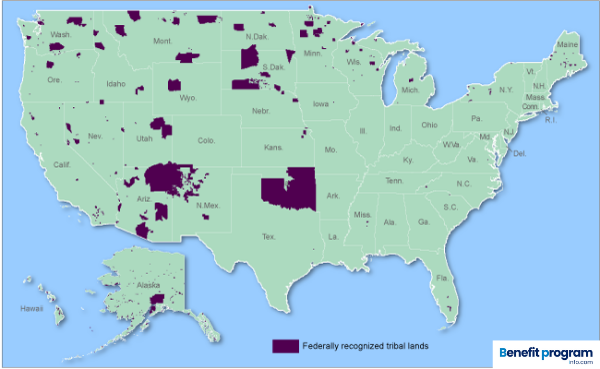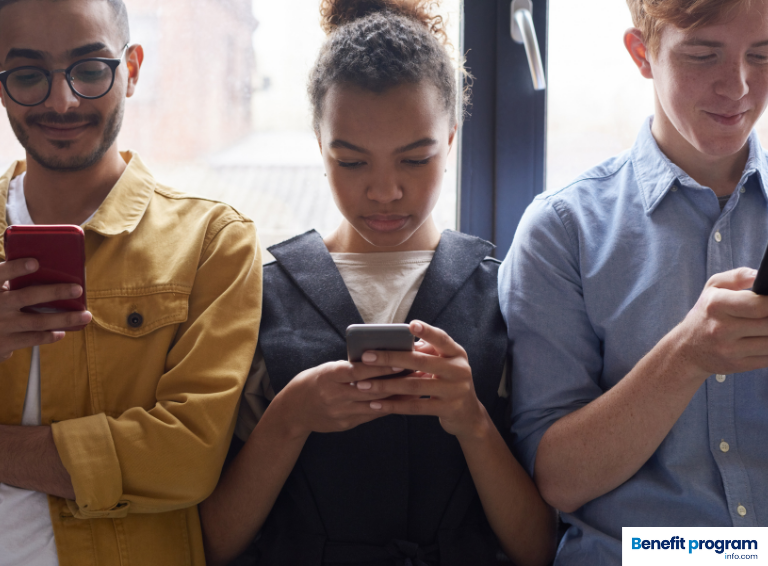Lifeline Eligibility: Who is qualified for the Lifeline Program
The Lifeline is a government initiative that offers subsidies to help make communication services more affordable for low-income individuals. This program is available to families who meet certain income requirements, and it can help them reduce their monthly expenses. If you are wondering what is the specific Lifeline eligibility and if you are qualified to join Lifeline, read on for more information.
Your household income is at or below 135% of the federal poverty guidelines
If your income is 135% or less than the Federal Poverty Guidelines, you may qualify for Lifeline. The guideline is based on the size of your family and where you live.

Lifeline Eligibility: Participants In One Of The Federal Assistance Programs
To be eligible for the Lifeline program, you must participate in programs such as Supplemental Nutrition Assistance Program (SNAP), Medicaid, Supplemental Security Income (SSI), Federal Public Housing Assistance (FPHA), or Veterans and Survivors Pension Benefit
1. SNAP

The Supplemental Nutrition Assistance Program (SNAP), formerly known as Food Stamps, is a government assistance program that helps low-income individuals and families purchase food. SNAP is administered by the United States Department of Agriculture (USDA).
The SNAP program provides food assistance to more than 40 million low-income individuals and families each month. Eligibility for SNAP is based on a variety of factors, including income, assets, and family size.
SNAP benefits can be used to purchase food at grocery stores, convenience stores, and farmers’ markets. In fact, the number of SNAP benefits received depends on the household’s size and income.
If you’re in need of SNAP benefits, you’ll need to apply through your state. Each state has different SNAP application procedures, but you will typically need to fill out an application and submit it to your local SNAP office. You may also be required to provide documentation proving your need for SNAP benefits. Once your application is approved, you’ll receive an Electronic Benefits Transfer (EBT) card, which can be used to purchase SNAP-eligible food items at participating stores.
Visit the SNAP website for more information on SNAP and how to apply in your state.
2. Medicaid

Medicaid is a government insurance program that helps pay for medical care for low-income people. The Medicaid program is available in all 50 states.
This program covers a wide range of medical services, but it does not cover all medical care. Medicaid also has different rules in different states.
Medicaid can help you pay for doctor visits, hospital stays, prescriptions, and other health care services. This program may also pay for long-term care, such as nursing home care. Medicaid is a joint federal and state program, and each state has its own rules about who can get Medicaid and what services are covered.
If you think you might be eligible for the Medicaid program, contact your state Medicaid agency or visit the Medicaid website to learn more and to apply. You can also find information about Medicaid in your state’s Health Insurance Marketplace.
3. SSI

Supplemental Security Income (SSI) is a program that provides cash assistance to people who are disabled, blind, or aged. SSI is federally funded, and therefore available to residents in all states. To be eligible for SSI benefits, you must meet certain requirements, such as being unable to work due to a disability and having limited income and resources.
The application process for SSI is simple. You can apply online, over the phone, or in person at your local Social Security office. Please note that you will need to provide proof of your disability, income, and resources. Moreover, if you are approved for SSI benefits, you will receive monthly payments from the government.
4. FPHA (Section 8 Housing)

The Federal Public Housing Assistance program (Section 8 Housing) is a HUD-sponsored program that provides financial assistance to low-income families who are struggling to pay their rent.
Public housing is administered by local housing agencies (HAs), which are either congressionally chartered or state/local public entities. There are approximately 3,300 HAs that administer HUD’s public housing program. Each HA has a governing board made up of residents, low-income representatives, and other interested stakeholders.
Federal Public Housing Assistance is a great way to get into your own home without breaking the bank. The application process is simple, and you could be approved in no time. Contact your local housing authority to learn more about Federal Public Housing Assistance.
5. Veterans and Survivors Pension Benefit

The Veterans Pension program provides monthly payments to wartime veterans who meet certain age and disability requirements, as well as income and net worth limits.
The Survivors Pension offers qualified surviving spouses and unmarried dependent children of wartime Veterans monthly payments if they meet certain income and net worth limits set by Congress.
To find out if you are eligible for the Veterans and Survivors Pension Benefit, visit the Veterans Affairs website.
Lifeline Eligibility: Participants of Tribal Assistance Programs
If you live on Tribal lands, you are qualified for the Lifeline if your household income is at or below 135% of the Federal Poverty Guidelines, or if you’re a member of one of the Tribal-specific programs. They can be the Bureau of Indian Affairs General Assistance, Head Start, Tribal TANF, or the Food Distribution Program on Indian Reservations.

1. Bureau of Indian Affairs General Assistance
The Bureau of Indian Affairs (BIA) General Assistance program provides eligible tribes and their members with temporary financial assistance. The program is designed to help individuals and families who are unable to meet their basic needs, including food, clothing, and shelter.

To be eligible for BIA General Assistance, you must be a member of a federally recognized tribe. You must also meet certain income requirements, and your assets cannot exceed a certain amount.
If you are eligible for BIA General Assistance, the program can provide you with financial assistance for up to 12 months. The amount of assistance you receive will depend on your income and assets.
If you are interested in applying for Bureau of Indian Affairs General Assistance, please visit benefits.gov for more information. You can also contact their office directly to learn more about the program and how to apply.
2. Head Start
Head Start is a federal program that enhances the cognitive, social, and emotional development of children from low-income families from birth to age five in order to help them be ready for school. The Head Start programs provide a supportive learning environment for children’s development in a variety of areas, including language, literacy, and social and emotional development. The role of parents as their child’s first and most important teacher is emphasized in Head Start. These programs assist in the development of relationships with families that promote family well-being and a variety of other important factors.

Children from birth to age five from low-income families are eligible for Head Start and Early Head Start services, according to the federal government’s Poverty Guidelines.
Regardless of income, children in foster care, homeless children, and children from families receiving public assistance (Temporary Assistance for Needy Families or Supplemental Security Income) are eligible for Head Start and Early Head Start services.
For further information about the Head Start program, please visit the Head Start official website.
3. Tribal TANF
Tribal TANF is a program that provides financial assistance to families in need. It is administered by the Department of Health and Human Services and is available to eligible Native American tribes. Tribal TANF can help families with basic needs such as food, clothing, and shelter. It can also provide other services, such as job training and child care.
If you are interested in applying for Tribal TANF, please contact your local tribe or the Department of Health and Human Services. You can find contact information for your tribe’s welfare office by visiting the website of the Bureau of Indian Affairs.
4. Food Distribution Program on Indian Reservations

The Food Distribution Program on Indian Reservations (FDPIR) is a federally funded program that provides food assistance to eligible Native Americans living on or near Indian reservations. The program is administered by the U.S. Department of Agriculture’s Food and Nutrition Service, and it is one of the largest nutrition assistance programs in the country.
The Food Distribution Program on Indian Reservations provides eligible households with a monthly food package. The package includes staple foods such as cereals, meat, poultry, and fish; canned fruits and vegetables; dry beans and peas; and peanut butter.
To be eligible for the FDPIR, you must meet certain requirements, including being a member of a federally recognized tribe and residing on an Indian reservation. You may also qualify if you are a descendant of a member of a federally recognized tribe. For more information on eligibility requirements, visit the USDA website.
Please note that during the Lifeline application process, you will need to show your proof of income or proof of participation in one of the aforementioned Federal Assistance Programs. Therefore, be sure to prepare all the needed documents before applying for the Lifeline program.
One per household rule
Per household, only one Lifeline benefit is allowed. Subscribers cannot receive more than one Lifeline service due to federal regulations. If a subscriber or his or her household has more than one Lifeline-discounted service, they must immediately de-enroll from other Lifeline services or face penalties.
Conclusion
In conclusion, Lifeline is a government benefit program that provides discounts on monthly telephone services for eligible consumers. To receive Lifeline benefits, consumers must either have an income that is at or below 135% of the federal Poverty Guidelines or participate in specific Federal Assistance Programs as listed above. If you’re sure that you meet the Lifeline eligibility, learn how to apply for Lifeline now.
